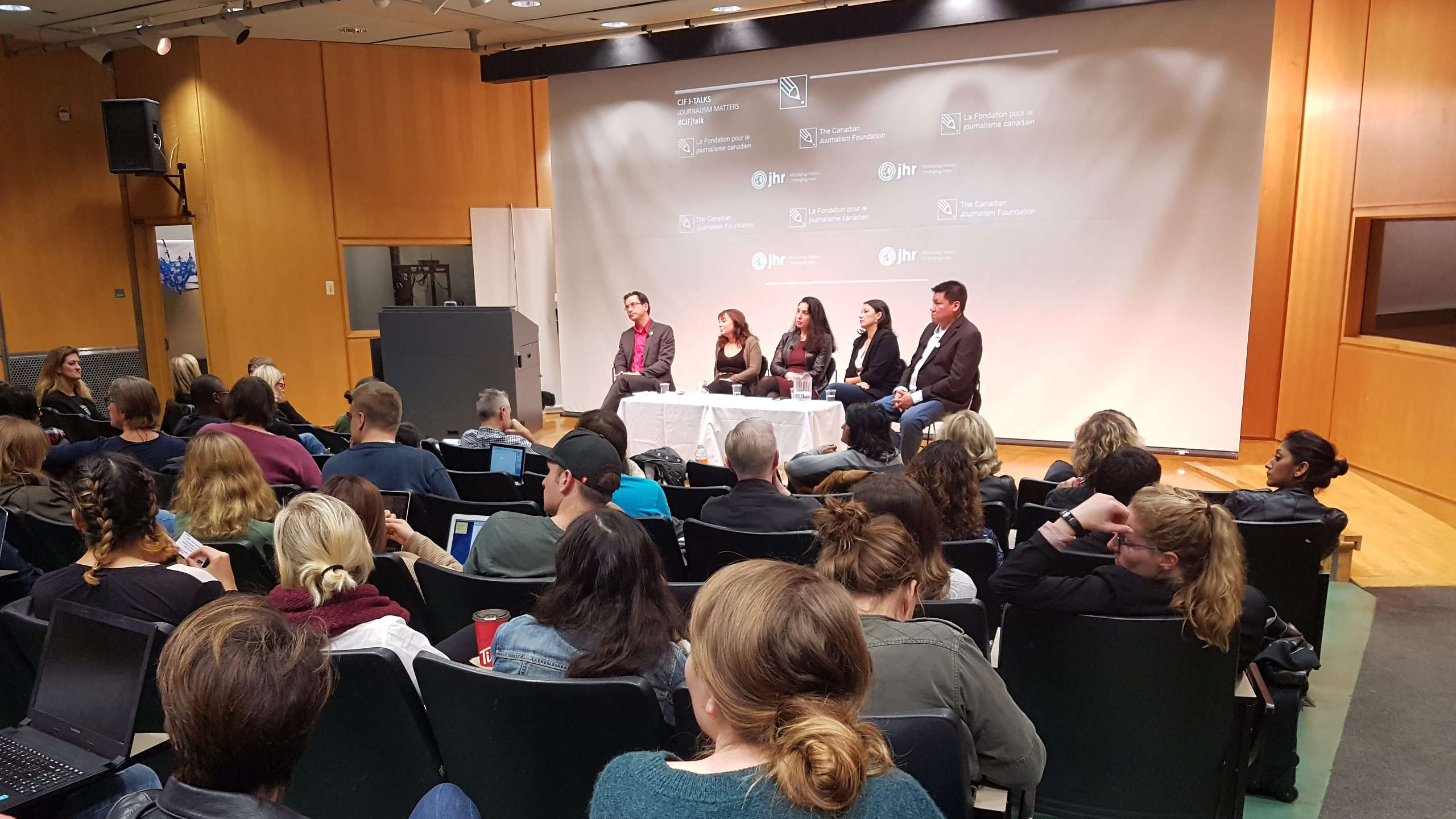By Swikar Oli
Journalism schools should be required to teach Aboriginal history classes, panelists said Thursday.
“We are a part of Canadian history,” Karyn Pugliese, executive director of News and Current Affairs at Aboriginal Peoples Television Network told the crowded RCC auditorium. “You can’t effectively cover things without knowing the history behind it.”
Other panel speakers included Toronto Star reporter Tanya Talaga, CBC News investigative journalist Connie Walker and program manager for the Indigenous Reporters Program, Lenny Carpenter.
CBC Radio host Duncan McCue moderated the Canadian Journalism Foundation-hosted event, which was titled, “Beyond Missing and Murdered Women: Covering Indigenous Communities.”
The panel discussed the recent swell of coverage in stories involving Indigenous Canadians and emphasized the need for journalists covering their stories to be respectful and conscious of their history.
“There’s some serious human rights abuses that have been happening in Canada for a long time and we’ve talked about it; we’ve tried to cover it, and then sometimes we faced editor’s who’ve said to us, ‘Well, you know, that’s a great story. But do you have to write that again? Is there going to be a solution to this problem?’” Talaga said. “But now there’s more of a gradual opening up and acceptance of these issues because Canadians actually want to hear about them and read about them.”
Walker said “interest in all Indigenous issues” has grown in the last three years. She finds that “now it’s impossible to keep up with every single Indigenous story that CBC is doing across the country.”
Walker said the media’s reversal is due to the internet. “I think that in traditional platforms like newspapers or television or radio, it was the editors who were in the newsroom, who were deciding what was relevant to Canadians, and that wasn’t really challenged.”
Now, she says, “everyone is recognizing, ‘Oh, these stories get clicks. These are important to Canadians. There is an interest here.’”
Carpenter acknowledged a “shifting” in news coverage of Indigenous matters, but said Indigenous Canadians are still proportionally underrepresented in media, citing a Journalists for Human Rights report, saying stories with Indigenous Canadians are still covered five times less relative to their population.
The panel also discussed the importance of keeping the voices and community angle when covering stories in First Nation communities.
“Maybe some of the things to look at are: Are there ways to tell that story in a way that’s meaningful important or a priority for the community and the way they understand it? … Also giv[e] them more time to express themselves and be more in the centre of the story instead of a second or a third character in a story that really impacts Indigenous people,” Pugliese said.
Questions about journalism’s role in furthering reconciliation dominated the ninety-minute discussion. Carpenter said using the term Indigenous reporting “relegates it to a sort of beat or a niche.”
“For instance, why can’t Tribe Called Red or some other Indigenous musician be just in the regular arts and entertainment section instead of, like, “Oh, it’s an Indigenous story.’ Why can’t a Indigenous athlete that’s made some accomplishment be in the regular sports section, instead of the Indigenous section or beat?” Carpenter said.











Leave a Reply